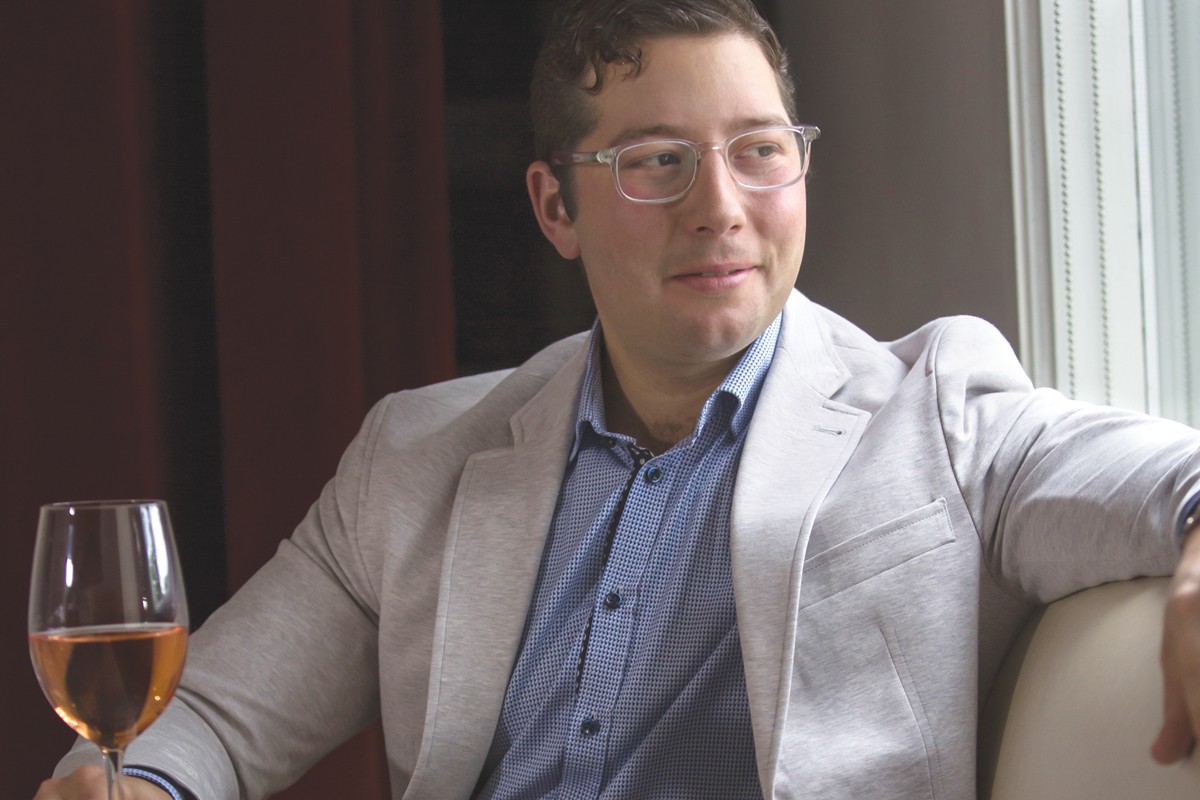I'm no sommelier, but I know enough about wine to not ruin a meal. But when I picked up the list at a trendy French bistro in New York City recently, I felt like an uncouth rube on his first day out in the Big City. Filled with obscure all-natural bottles, the roster might as well have been penned in Greek. So I did what I always do in those situations: texted the list to a friend who is a sommelier. Before long my wife and I were giddily devouring a funky, fruity and slightly effervescent wine with electric acidity. Oh, and it was the color of a sweet potato.
Welcome to the wild world of natural wines, a broad category of options that often (but not always) translates into exciting, highly drinkable wines with effusive personality. If you are a wine lover who pays attention to trends, then you doubtless have been following along as this anti-establishment movement continues to attract devotees. Even if you've never heard about these so-called "real" wines, you likely already have enjoyed one or two without even realizing it.
So, what do we mean when we say "natural wine"?
"There's is no clear definition, so there's not a lot of clarity around it," says Maggie Harrison, a veteran sales rep for Vintage Wine Distributor. "But generally speaking, it means that nothing is added and nothing is taken away."
The current interest in and demand for natural and minimal-intervention wines has been building for years, as rebellious young vintners in the Old World and New have been taking a more hands-off approach to winemaking that favors tradition over manipulation. From the vineyard to the winery, every effort is made to let nature take its course, resulting in wines that best express the fruit and terroir, or sense of place.
"In the '90s, you could tell that wines were changing and it was getting harder to differentiate a cabernet-based wine from France versus one from Napa Valley and other places," explains Adam Fleischer, owner of the Wine Spot in Cleveland Heights. "People like to talk about the Robert Parker Effect on wine. If wineries around the world wanted a good rating from Robert Parker, they needed to start doing things to their wine to match his preferred style."
Far from the old-fashioned way of doing things, winemakers would irrigate vineyards and apply chemical fertilizers and pesticides. The manipulation continued in the winery where sugar was added to the juice prior to fermentation to boost alcohol, grape concentrate was used to adulterate color, powdered tannin and tartaric acid were employed to tweak those levels, and the resulting product was buried beneath a somber cloak of new oak. Before it's bottled, the wine gets fined, filtered and preserved with a lethal dose of sulfites.
Practitioners of natural winemaking, however, take an altogether different route. It starts in the field, where hardy native vines or old varietals plucked from obscurity are grown sustainably, organically or biodynamically. After harvest, the ripe fruit is crushed, exposing the juice to indigenous "wild" yeast on the skins and thus kick-starting spontaneous fermentation. Wines are aged in neutral vessels such as stainless steel, glass, concrete or earthenware pots; no new-oak barrels. Little to no sulfites are added and the wine is bottled unfiltered and unfined.
"Many, many wineries around the world are doing it this way," Fleischer says. "These are really interesting wines that we enjoy. If we enjoy them and our customers keep asking for them, I would be doing a disservice by not paying attention to them."
Given the laissez faire approach to winemaking, results are across the board when it comes to appearance, aroma and flavor. Pop a top and you might get an orange wine politely described as untamed and funky — or impolitely compared to horse manure — or one that is smooth-drinking, pleasantly tart and delicious.
"There is a huge range of taste profiles and presentations you can get, from high to low quality and from cloudy to clear and brilliant," adds Harrison. "The flavors can range from a cidery tartness to funky and barnyardy. Because they tend to be lower in alcohol and higher in acidity, they are going to be more food friendly, making them well-suited to chef-driven restaurants."
Pick up the wine list at any Zack Bruell restaurant and you'll enjoy what is likely the largest natural wine selection in the region. Julian Bruell, director of service and beverage, encountered the movement while working in Brooklyn, and it was one he was eager to showcase across the board at Zack Bruell Restaurants.
"They're great with foods," he says. "The Alley Cat menu is real funky and wild right now, with three fourths all-natural. I just feel like that style of wine goes great with seafood."
Bruell has experienced no shortage of pushback from conventional wine lovers who've heard disquieting anecdotes about off-putting aromas and flavors, but he's more than happy to help clear up misconceptions.
"A lot of people associate natural wines with cloudy, unfiltered, kind of dirty, funky-smelling, cidery ... but most of them are clean, fruit-driven and fresh," explains Bruell. "My father calls it hipster, but to me, it's just an old style of winemaking that goes back to before there was modern technology. It's a total hand-sell, but I love them."
As with most trends, Cleveland has been slow on the jump when it comes to natural wine. Selections are sparse at retail shops and on restaurant wine lists. We can blame Robert Parker and his 100-point scale for getting us here, but his influence on modern winemakers has been waning for years.
"In cities like Chicago and San Francisco and New York, there are bars and restaurants that are entirely natural wines," reports Harrison. "Cleveland is always a little behind the times. The pendulum is swinging back to 50 years ago. It's not for everybody. If you like something, go for it. At the end of the day, it's just another option."










